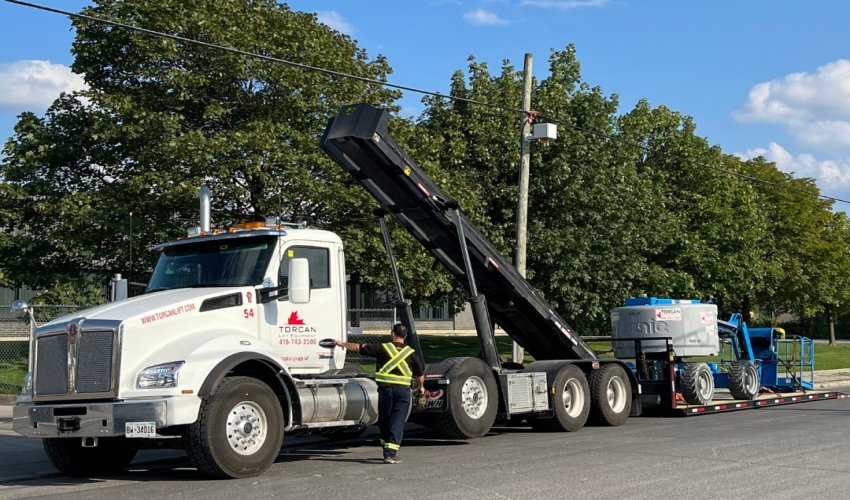In the world of construction and material handling, versatility is key. The ability to adapt to various tasks and environments is what separates successful businesses from the rest. Among the many equipment options available, telehandlers have emerged as indispensable tools for a wide range of industries. These versatile machines combine the capabilities of a forklift and a crane, making them highly sought after by leading hiring businesses.
In this blog, let’s delve into the revolutionizing high capacity telehandler, also exploring the reasons why they are a top choice for many businesses in the construction, agriculture, and industrial sectors.
Understanding Telehandlers
Before we dive into their versatility and applications, let’s briefly understand what a telehandler is. Also known as telescopic handlers or boom forklifts, telehandlers are robust machines designed for material handling and lifting tasks. They are characterized by their telescopic boom, which can extend both upward and outward. Unlike traditional forklifts, telehandlers can reach heights and distances that were once only possible with cranes, making them incredibly versatile.
Telehandler in Action
Versatility in Construction
One of the primary reasons telehandlers are favored in the construction industry is their remarkable versatility. Here are some ways in which they are used on construction sites:
- Material Handling
Telehandlers excel at moving heavy materials across construction sites. Whether it’s transporting pallets of bricks, bags of cement, or steel beams, these machines can handle it all. Their telescopic booms enable operators to reach over obstacles, reducing the need for excessive manual labor or additional equipment.
- Lifting and Placement
Telehandlers are not limited to horizontal movement; they can also lift loads to considerable heights. This makes them invaluable for tasks like placing roof trusses, hoisting equipment to elevated platforms, or even setting up scaffolding. The precision of the telescopic boom ensures accurate placement, increasing efficiency and safety.
- Versatile Attachments
Telehandlers can be fitted with a wide range of attachments, further enhancing their adaptability. Attachments include pallet forks, buckets, jibs, and more. These attachments allow telehandlers to perform various tasks, such as digging, lifting, and even handling materials in tight spaces.
Agricultural Applications
Telehandlers are not limited to construction; they have found a significant role in agriculture as well. Farmers and agricultural businesses have embraced telehandlers for the following reasons:
- Hay Handling
In the agricultural sector, the ability to handle hay bales efficiently is crucial. Telehandlers equipped with specialized bale spikes can easily lift and transport these large and cumbersome objects, reducing the physical strain on farm workers.
- Crop Management
Telehandlers equipped with buckets or grappler attachments can help with various crop-related tasks. They can be used for loading and unloading produce, clearing fields, and even digging irrigation trenches when fitted with the appropriate attachment.
- Precision in Livestock Handling
When handling livestock, especially in tight spaces, precision is essential. Telehandlers, with their telescopic booms and maneuverability, make it easier to handle feed, clean barns, and assist with various livestock-related tasks.
Industrial Utility
Telehandlers are also widely used in industrial settings. Manufacturing facilities, warehouses, and logistics companies find these machines invaluable for the following reasons:
- Warehouse Operations
In warehouses, telehandlers can efficiently move and stack pallets, facilitating organized storage and retrieval. Their maneuverability is particularly useful in tight spaces where traditional forklifts may struggle.
- Maintenance and Repairs
Telehandlers are often used for maintenance and repairs in industrial facilities. The telescopic boom allows technicians to access high areas for repairs or equipment installation without the need for scaffolding or ladders.
- Versatile Cargo Handling
Industrial businesses often deal with various types of cargo, from heavy machinery to delicate goods. Telehandlers equipped with the right attachments can handle a wide range of cargo, making them a versatile choice for loading and unloading tasks.
Safety and Efficiency
Aside from their versatility, telehandlers offer several safety and efficiency advantages:
- Reduced Manual Labor
By replacing manual labor with telehandlers for lifting and material handling tasks, businesses can reduce the risk of worker injuries and enhance efficiency.
- Improved Reach
The telescopic booms of telehandlers allow operators to reach heights and distances that would be difficult or impossible with traditional equipment, reducing the need for additional machinery or costly scaffolding.
- Precise Control
Operators can precisely control the movement and positioning of loads, reducing the risk of accidents and damage to materials or structures.
Conclusion
Telehandlers have become indispensable tools in a variety of industries due to their exceptional versatility, safety features, and efficiency. From construction and agriculture to industrial applications, these machines offer a wide range of capabilities that can adapt to various tasks and environments. Leading hiring businesses choose high capacity telehandler because they provide a cost-effective and efficient solution for material handling, lifting, and numerous other applications.
As industries continue to evolve and demand greater adaptability from their equipment, telehandlers are likely to remain at the forefront of innovation and utility, driving growth and success for businesses across the board. Also, connect with Torcan Lift Equipment at 1-833-743-2500 or write to us at info@torcanlift.com to rent a telehandler or any construction equipment to elevate your business to the next level in terms of efficiency and productivity.

